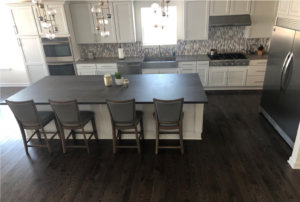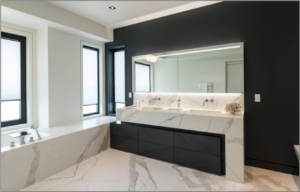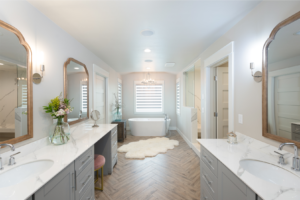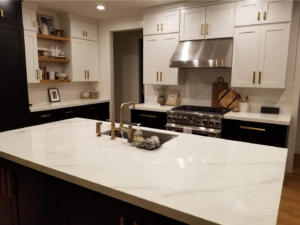The Ultimate Guide to Porcelain Countertops [With Pictures]
Porcelain countertops are a great surfacing option for consumers. However, since porcelain as a surfacing material is newer to the market, most home and business owners aren’t aware that it exists.
Let’s take a look at all of the different components of this versatile, beautiful countertop surfacing option.
Porcelain Countertops: The Ideal for Designers
Porcelain countertops check a lot of boxes for designers who are trying to pull together a complete, functional look in a household or business:
- Hyper-realistic visuals created by digital printing
- Advanced stain resistance provided by very low porosity
- Can be used outdoors without fear of discoloration due to high UV stability
- Suitable in areas where stone and quartz can’t perform due to high heat tolerance
- Wide variety of edge possibilities provided by coordinated body
- Can be designed to look built-up or as a single sheet for a more clean-lined look
In addition to being a great option for interior (or exterior) countertops, porcelain is ideal for waterfall countertops, islands, tabletops, furnishings, vanity tops, backsplashes, floors and walls.
With these features, porcelain countertops are every designer’s dream material!
Types of Edges
Thanks to the coordinated body of porcelain, a wide variety of edges are possible.
In particular, you can go for a mitered edge with 2-3mm round/radius. This is the most common look:
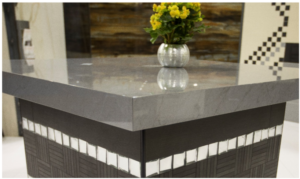
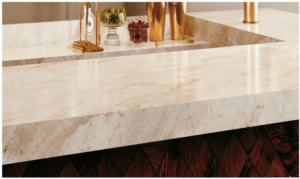
Or, try a flat polished edge with 2-3mm round/radius:
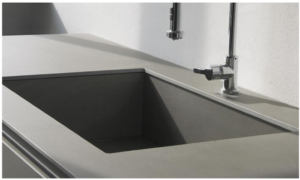
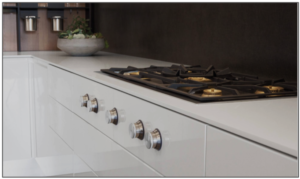
These two types of edges (of many) are completely different yet amazingly sleek looks out of the same material. The possibilities are endless.
Types of Finishes
Depending on the color of the slab and the design preferences, porcelain slabs can be polished, unpolished or both.
These concretes, from the Crossville Porcelain Notorious collection, are unpolished:
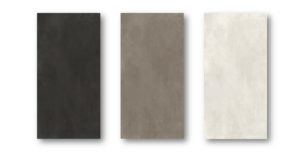
(From left to right: Crossville Film Noir, Suspense and Female Fatale)
Meanwhile, these stone lookalikes can be polished and unpolished:

(From left to right: Crossville Lightning, Baltic and State of Grace.)
Lastly, this gray and black stone-look, via the Crossville Night Watch collection, can only be polished:

Notice on these examples the veins running through the surface. This decoration is applied to the surface – it doesn’t go all the way through the body – similar to a porcelain tile.
Porcelain Countertops: Quick Care Tips
Like other materials, porcelain is fairly simple to maintain, so long as you heed proper care tips. Here’s what you need to know:
Stains
Porcelain is very stain resistant. In internal experiments completed by Crossville Porcelain Countertops comparing the material to natural stone and engineered quartz, this material offers superior stain resistance. This is due to the low porous nature of the material.
Scratches
Porcelain has high abrasion resistance. However, more care should be taken if the countertop has a polished finish.
Chips
Any solid surface material has the potential to chip, but with the proper fabrication and edge treatment, the potential to chip will decrease.
If a chip does occur, most fabricators have the ability to repair the surface or edge chips using color-matched epoxies.
Temperature Treatments
Porcelain has a very low thermal expansion, so it will not distort or discolor when subjected to high temperatures. This also means it can be used in outdoor applications! Porcelain is freeze/thaw and UV stable, making it a perfect option for your outdoor bar or kitchen countertop.
Porcelain Installation
Have you been sold on porcelain for your next project, yet? Scroll through these pictures of porcelain installation for more inspiration … and then get in touch with our team to get started.

